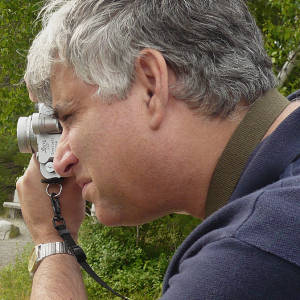Confluence and Conjecture. Lumix M4/3 14mm
Yesterday, I shared the experience of attending an informal retirement lunch for a friend and woodworking colleague. Back in 1992, we had all rented space in an old industrial building owned by Tufts University in Medford, Massachusetts. Over the course of twenty-plus years, that building became a center of creative endeavor in Boston. There were many small cabinet shops, several musical instrument makers and restorers, - I one of them -, decorative artists, stained glass workers, furniture restorers. You name it, somebody had a tiny shop on one of the four floors, scratching a creative living from the earth.
Then, in 2013, Tufts was bequeathed 63 million dollars by an alumnus to transform “our” derelict old building into a state-of-the-art Science Center. With a pen stroke, our unique community was scattered to the four winds.
As part of our little reunion yesterday, we went to visit the building in its transformed state. As I wandered around, taking it all in, I happened upon a stainless steel plaque mounted on the wall in the corner of the building where my retiring friend used to have his workshop. In fact, the Allan Cormack Room occupies almost exactly the space which was once his woodshop.
It would be easy for the uninitiated to walk past without a second thought. But for me, as an x-ray technologist, the plaque and its very location represent an extraordinary confluence of family and personal connections: Allan Cormack was a South African physicist who, during the late 1950s conceived the medical imaging x-ray technology which we now know as CAT Scan, or Computerized-Axial-Tomography. It was first used clinically in the mid-1970s. Simply explained, CT is an x-ray machine which revolves around the patient, producing “slices” of information as the patient is moved linearly by the gantry. This information is then re-assembled by a computer into a 3-dimensional image revealing much more diagnostic material than plain, 2-dimensional x-ray technology can. Its invention was a game-changer for medical imaging.
Allan Cormack was appointed Chair of the Tufts Physics Department in the late 1960s, a position he held until his death here in Boston in 1998. But his early research was done at the University of Cape Town - my Alma Mater -, and world-famous Groote Schuur Hospital in 1956-57. At this time, my late father was a senior lecturer at the UCT Medical School, and Head of Diagnostic Radiology at the hospital. I’m left to conjecture if the two of them knew each other, and collaborated in the humble beginnings of this wonderful invention. Here is a link to the Wiki article on Allan Cormack for those interested.

Comments
Sign in or get an account to comment.


